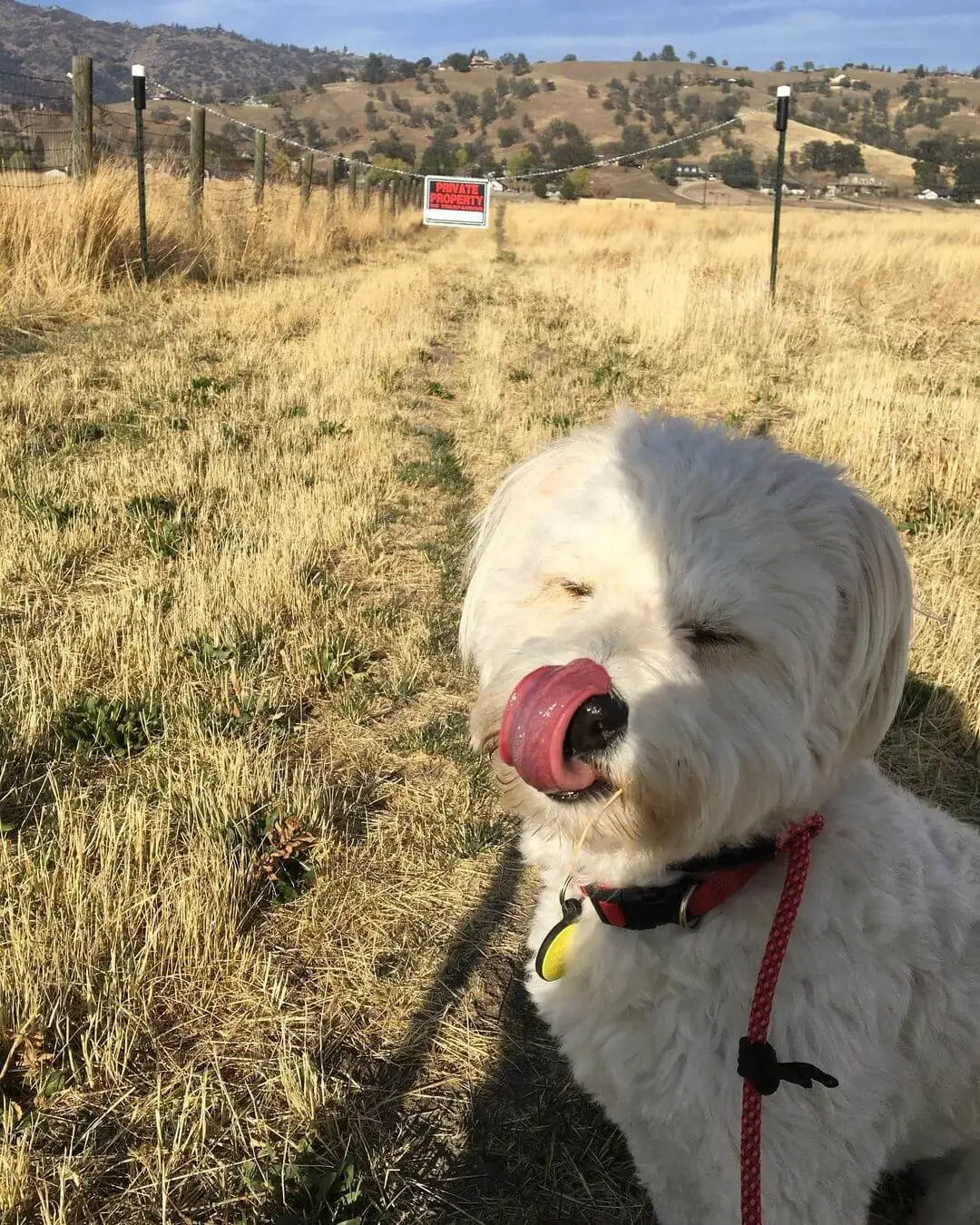Staffy Poodle mixes are a new kind of dog that’s a mix of a Staffordshire Bull Terrier (Staffy) and a Poodle. They’re affectionate and loyal, which makes them great family pets.
Staffy Poodle mixes are also called Staffy Poos, Staffypoos, Staffydoodles, Staffapoos, and Staffdoodles.
Here’s why people like Staffy Poodle mixes:
- They don’t cause allergies. Poodles have hair that doesn’t shed much, so Staffy Poodle mixes are a good choice for people with allergies.
- They’re energetic and playful. Staffies are known for being playful and energetic. This makes Staffy Poodle mixes great for active people and families.
- They’re affectionate and loyal. Both Staffies and Poodles are known for being loving and loyal. This means Staffy Poodle mixes are also loving and loyal.
- They have a unique appearance. Staffy Poodle mixes can look very different depending on which parent is more dominant. They can have curly or wavy hair, and they can be small or medium-sized.
This article will tell you everything you need to know about Staffy Poodle mixes. We’ll talk about their history, what they look like, how they act, their health, how to care for them, how to train them, and how to find one. After reading this article, you’ll know if a Staffy Poodle mix is right for you.
The History of Staffy Poodle Mixes
Staffy (Staffordshire Bull Terrier) History
Staffies have a long history that goes back to the 19th century in England. They were originally bred to be used in cruel and inhumane blood sports. But in 1835, these practices were stopped. Even though they had a bad start, Staffies changed a lot. Today, they’re known for being loyal, affectionate, and brave. Staffies are playful and energetic, which makes them popular family pets.
Poodle History
Poodles are a popular breed known for being smart and having hair that doesn’t cause allergies. They have a long history that started in Germany. People originally bred poodles to retrieve things from water. Their curly hair helped them stay warm in cold water, and their webbed feet made them good swimmers.
Over time, Poodles came in three different sizes: Standard, Miniature, and Toy. Each size has its own special traits, but all Poodles are known for being smart, easy to train, and affectionate.
Creating Staffy Poodle Mixes

No one knows for sure when Staffy Poos were first created. But it’s thought that they were first made in the United States in the late 20th or early 21st century. Breeders wanted to mix Staffies and Poodles to make a new dog that was playful, energetic, smart, and didn’t cause allergies.
Staffy Poos are a relatively new breed. This means there’s still a lot to learn about their genes, how they act, and their health.
For more information on Staffy Poodle mixes, check out this comprehensive guide:
https://floofydoodles.com/staffypoo-the-staffordshire-bull-terrier-and-poodle-mix/
Physical Appearance
Size and Weight
Staffy Poos can be different sizes. This depends on which parent is more dominant. But they’re usually small to medium-sized dogs. Most Staffy Poos weigh between 25 and 50 pounds.
- Small Staffy Poos are usually around 25-35 pounds. These are often made by mixing a Miniature or Toy Poodle with a Staffy.
- Medium Staffy Poos can weigh between 35 and 50 pounds. These are usually made by mixing a Standard Poodle with a Staffy.
Coat Color and Texture
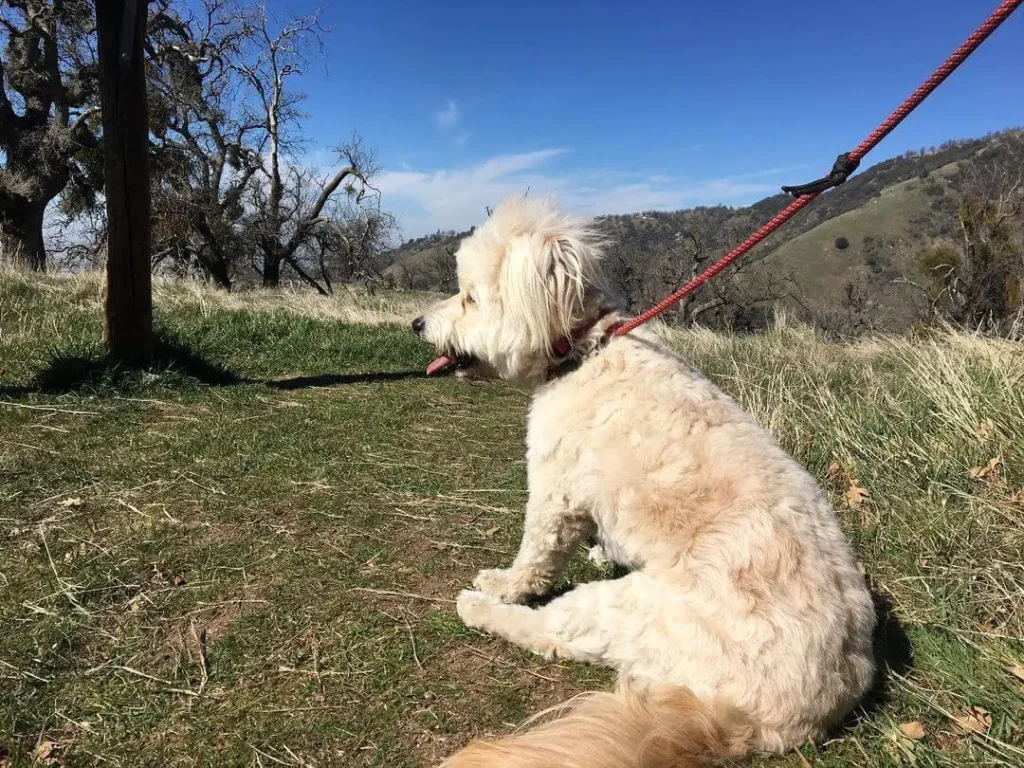
These Poodle mixes can have various coat types, which depend on their parents’ genes. However, most Staffy Poos have curly or wavy hair.
These Poodle mixes can come in a wide range of colors. They can be solid colors like black, white, brown, gray, or brindle. Some Staffy Poos have patches of different colors, known as parti color coats.
Head Shape and Facial Features
These Poodle mixes usually have a square-shaped head and a short muzzle. Their eyes are usually round and expressive. Their ears can be cropped or natural, and they can be folded or stand up.
Body Structure and Build
These Poodle mixes are strong and athletic dogs, possessing muscular bodies, strong legs, broad chests, and short, level backs.
Temperament

Energy Level and Activity Requirements
Staffypoos are energetic and playful dogs. They need regular exercise to stay happy and healthy. A daily walk and playtime are important to meet their physical and mental needs. Even though they like leisurely walks, they also enjoy more active things like playing fetch or running.
Intelligence and Trainability
Staffypoos are smart dogs. This is because both Staffies and Poodles are smart breeds. Staffypoos can learn new things quickly and can be easily trained using positive reinforcement. They like to be mentally stimulated and can do well in different dog training activities, like agility, obedience, and tracking.
Socialization
Socializing your Staffoodle early is very important. This means helping them get used to different people, places, and situations when they’re young. This can help them become confident and friendly. Socialization can also help prevent behavioral problems that might come from fear or anxiety.
Relationship with children and other pets
Staffapoos are usually good with children. But it’s always a good idea to watch them, especially with young children. They’re usually gentle and playful with children, but they might accidentally knock them over because they’re so big and energetic.
Staffapoos can also live with other pets. But it’s important to socialize them early to make sure they get along. They might have a strong prey drive, so be careful when introducing them to smaller animals like cats or rodents.
Guarding and Protective Behavior
Staffy Poos might try to guard or protect their family. This is especially true if they’re not socialized or trained properly. They’re loyal and protective, so they might bark or growl at strangers. This can be a good thing, but it’s important to make sure they don’t do it too much or become aggressive. Proper training and socialization can help manage these behaviors.
Health Considerations
Common health issues in Staffies and Poodles
Staffy Poos can get some health problems from both Staffies and Poodles. Knowing about these problems can help you take good care of your Staffypoo.
Staffy Health Problems
- Hip dysplasia: This is a problem with the hip joint that can cause pain and lameness.
- Heart disease: Staffies can get different kinds of heart disease, like cardiomyopathy and mitral valve disease.
- Skin allergies: Staffies can have allergies that make their skin itchy, red, and lose hair.
Poodle Health Problems
- Hip dysplasia: Poodles, especially Standard Poodles, can also get hip dysplasia.
- Progressive retinal atrophy (PRA): This is a disease that can cause blindness.
- Hypothyroidism: This is a problem with the thyroid gland.
Potential Health Problems
Staffy Poos can get health problems from both Staffies and Poodles. Some possible problems include:
- Hip dysplasia: This is a problem with the hip joint.
- Heart disease: Staffies can get heart disease, so Staffy Poos might also be at risk.
- Skin allergies: Poodles can have allergies, so Staffy Poos might also get allergies.
- Progressive retinal atrophy (PRA): If either parent has PRA, their puppy might also get it.
- Hypothyroidism: This is a problem with the thyroid gland. Staffy Poos can get this if one or both parents have it.
Taking Care of Your Poodle Mix
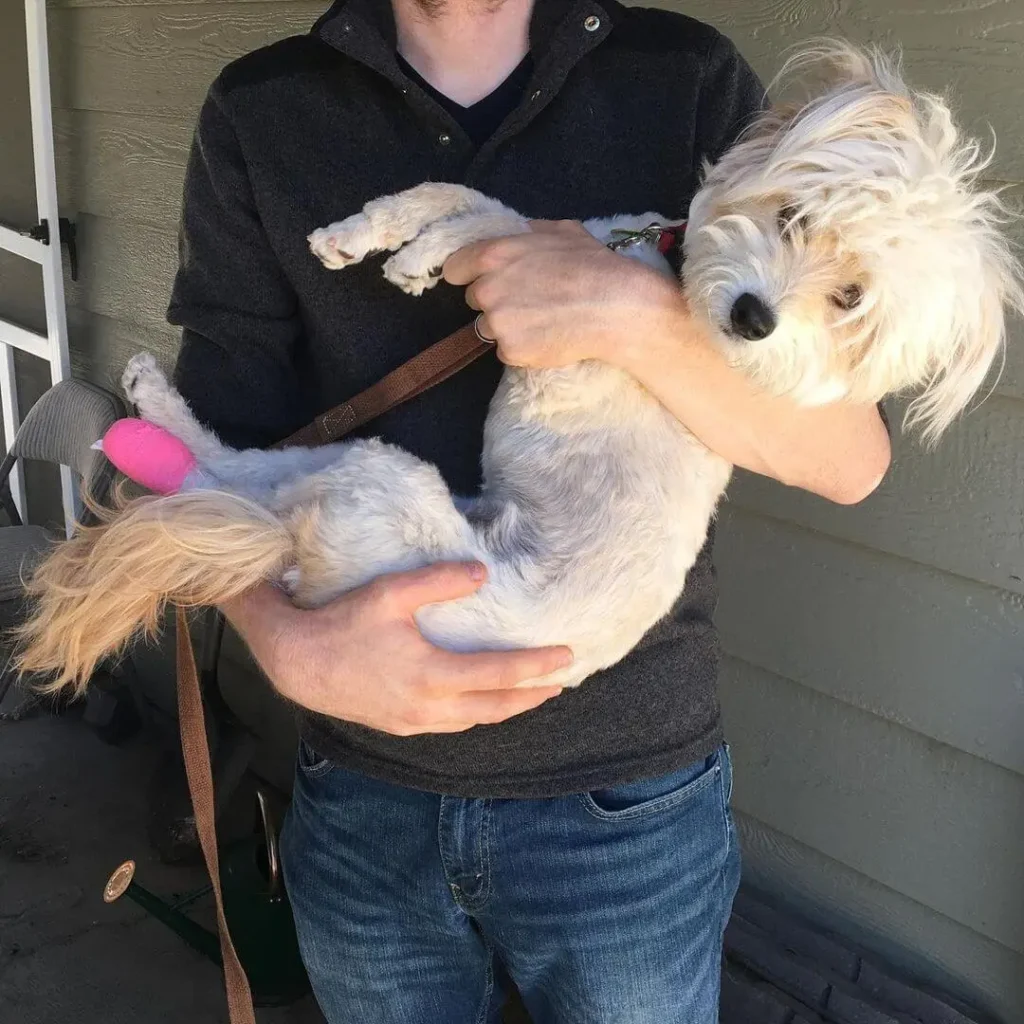
To keep your Staffy Poo healthy, it’s important to schedule regular visits to the vet. They can check for any problems early on. Some recommended checks include:
- Hip and elbow dysplasia screening: This can check for any problems with the joints.
- Heart screening: The vet can check for heart problems.
- Eye exam: The vet can check for progressive retinal atrophy or other eye diseases.
- Thyroid testing: The vet can check for hypothyroidism.
Besides regular checkups, it’s important to give your Staffy Poo a healthy diet, plenty of exercise, and preventive care. This includes vaccinations, parasite prevention, and dental care. By doing these things, you can help your furry friend live a long and healthy life.
Care and Grooming
Exercise needs and daily walks
Staffy Poos are energetic dogs. They need regular exercise to stay happy and healthy. A good walk every day is recommended, but more active people might enjoy longer walks or more playtime. These dogs like playing fetch, swimming, or doing dog sports.
Grooming Needs
How often you need to groom your Poodle depends on their coat. If their coat is curly or wavy, you might need to brush them more often to prevent mats and tangles. Brushing can also help their coat stay healthy and shiny.
How often you bathe your Poodle depends on how often they go outside and how their coat is. But most Staffy Poos can be bathed every 4-6 weeks. Use a gentle shampoo that’s made for dogs to avoid irritating their skin.
It’s important to trim your Poodle mix’s nails. If their nails are too long, they can be uncomfortable and cause pain. Trimming their nails regularly will help them stay comfortable.
Mental Stimulation and Training
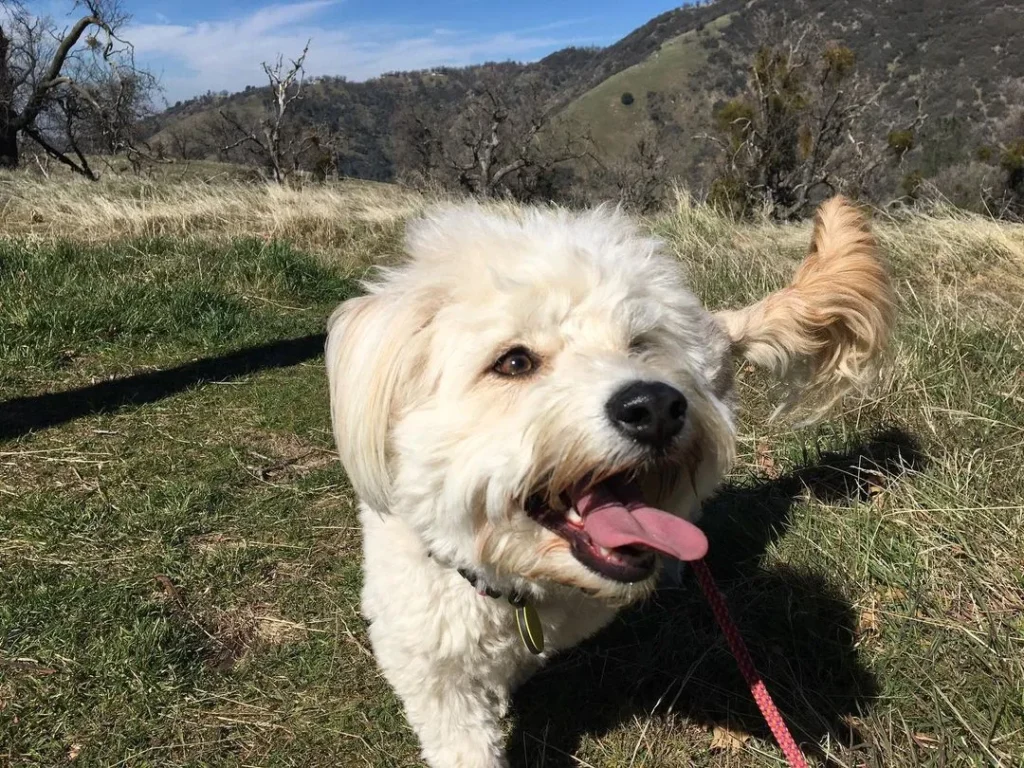
Staffy Poos are smart dogs. They need mental stimulation to stay happy and engaged. Training and puzzle toys can help keep their minds sharp and prevent boredom. Positive reinforcement is the best way to train them.
Feeding Your Staffy Poo
It’s important to give your Staffy Poo high-quality dog food. The food should be right for your dog’s age, size, and how active they are. Avoid giving your dog table scraps or human food. This can cause obesity and other health problems.
Talk to your vet about the best diet for your dog. They can recommend a specific brand of dog food or give you advice on making your own food. Make sure your dog always has fresh water to drink.
Training and Behavior
Positive Reinforcement Training Methods
Staffy Poodle mixes are smart dogs. They respond well to positive reinforcement training. This means rewarding your dog for good behavior with treats, praise, or affection. This can help you build a strong bond with your dog and teach them good manners and obedience.
Here are some effective positive reinforcement techniques:
- Clicker training: Use a clicker to signal to your dog that they did something good.
- Treat training: Reward your dog with treats for good behavior.
- Praise and affection: Show your dog you’re happy by giving them verbal praise and physical affection.
Socialization and Obedience Training
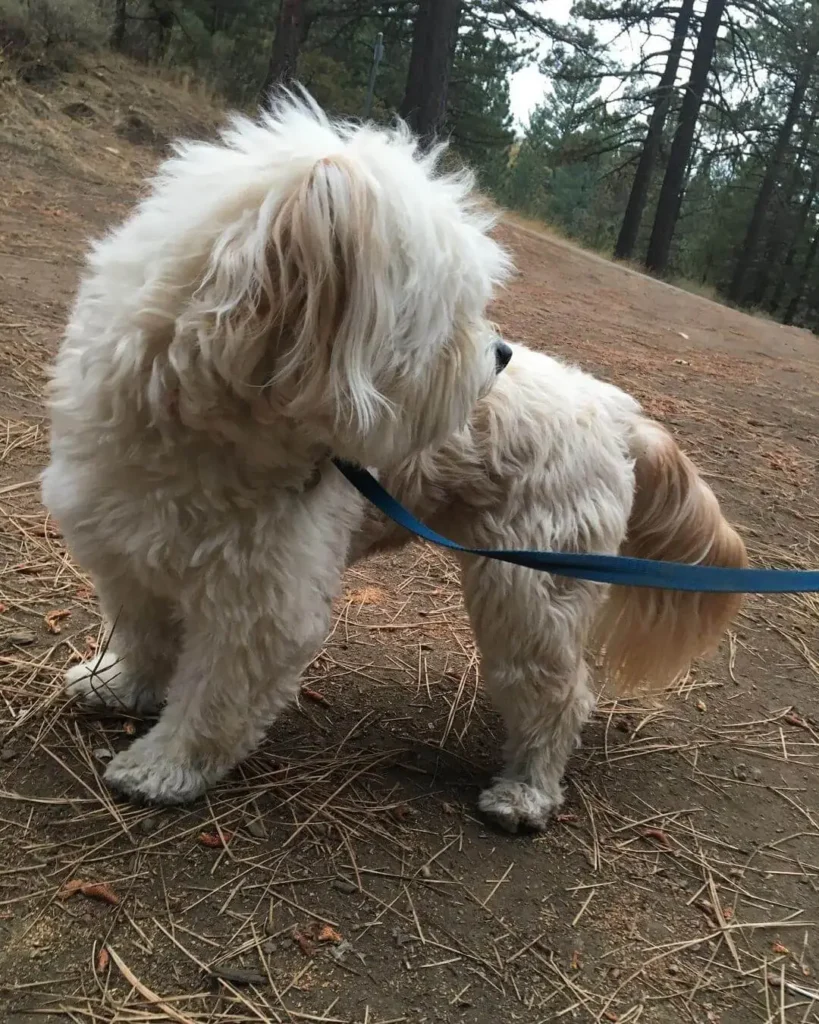
Socialization and obedience training are very important for Poodle mixes. Socialization means helping your dog get used to different people, places, and situations when they’re young. This can help them become confident and friendly.
Obedience training means teaching your dog basic commands like sit, stay, come, and heel. These commands are important for controlling your dog’s behavior and keeping them safe.
Common Behavioral Issues and How to Address Them
Staffy Poos can sometimes have some common behavioral problems. Here are some examples and how to fix them:
- Chewing: Dogs chew things naturally. But if your dog chews too much, it can be destructive. Give your dog plenty of chew toys to help them chew on the right things.
- Barking: Excessive barking can be annoying. Train your dog to bark on command and reward them when they’re quiet. This can help reduce unwanted barking.
- Jumping: Jumping on people can be dangerous. Teach your dog to sit and wait for attention before greeting people.
- Digging: Digging is also natural for dogs, but it can be destructive. Give your dog a special place to dig, or use things to discourage them from digging in the wrong places.
Living with a Staffydoodles
Suitable living environments
Staffydoodles can live in many different places. But it’s important to think about their energy level and how much exercise they need when choosing a home.
Apartments: Staffydoodles can live in apartments. But they need regular exercise and mental stimulation. Daily walks and playtime are important to keep them happy and healthy.
Houses: Houses with yards are a good choice for Staffydoodles. A fenced yard can help keep them safe.
Condos: Condos can be a good option for Staffydoodles, as long as they have access to outdoor space for exercise.
Compatibility with different lifestyles
Staffydoodles can be good companions for many different lifestyles. They’re good for active people who like outdoor activities and for families with children. But they might not be the best choice for people who don’t have an active lifestyle or who don’t have much time for exercise and training.
The Cost of Owning a Staffy Poo
The cost of owning a Staffy Poo depends on many things. These things include their size, age, and any health problems they might get. Here are some of the main costs:
- Food: The cost of dog food depends on the quality and how much you buy. High-quality dog food is usually more expensive, but it’s better for your dog.
- Vet care: Regular visits to the vet, vaccinations, and preventive care can add up. You might also need to pay for treatment if your dog gets sick.
- Grooming: How much grooming costs depends on your dog’s coat and how often they need grooming. Professional grooming can be expensive, but you can save money by grooming your dog at home.
- Training: If you decide to put your Poodle in obedience or agility classes, you’ll need to pay for the classes.
- Insurance: Pet insurance can help cover the cost of unexpected vet bills.
It’s important to budget for all of these things before getting a Poodle. This will help you make sure you can give your dog the care and attention they need.
Finding a Staffy Poo
When looking for a Staffy Poo, it’s important to find a good breeder or rescue organization. Good breeders care about the health and well-being of their dogs and follow ethical breeding practices.
- Breeders: Look for breeders who are members of recognized breed clubs and associations. These organizations have strict standards for breeders and can recommend good breeders.
- Rescue organizations: Many rescue organizations have Staffy Poos available for adoption. Adopting a rescue dog can be a rewarding experience and help a dog in need.
- If you’re searching for a Staffy Poo, consider exploring rescue organizations or other poodle mix breeds like Doxiepoo or Westiepoo.
Conclusion
Staffy Poos are a great combination of loyalty, energy, and hypoallergenic qualities. They’re smart and want to please, which makes them easy to train. Their unique appearance and playful personalities make them great family pets.
Staffy Poos can get health problems from both Staffies and Poodles. But regular vet checkups and good care can help prevent these problems. Staffy Poos need an active lifestyle and mental stimulation to thrive. With good training and socialization, they can be wonderful companions for anyone.
If you’re looking for a loyal, energetic, and hypoallergenic dog, a Staffy Poo might be the perfect choice for you.

